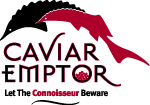

Sturgeon Aquaculture
Sturgeon breeding initially began more than 100 years ago for hatcheries to support the wild population. Culturing was attempted from 1880 to 1920 in Europe and North America, but with little success. Only in the Soviet Union was breeding successful, when hatcheries began operating about 1930. White sturgeon were artificially spawned outside the Soviet Union in 1979 at University of California, Davis.
Sturgeon farms are expensive to operate, in part because sturgeon females require 8 years or more to reach reproductive size. Aquaculturists have developed techniques to perform repeat "ceasareans" on females, which helps reduce costs. One producer has performed up to five successful operations on a single fish.
Aquaculture raises a number of serious environmental concerns related to pollution, escapes of farmed fish (which can carry diseases to wild populations and breed with wild fish), the use of antibiotics to control diseases, and the use of wild fish as food in aquaculture. Sturgeon aquaculture operations in the United States avoid some of these problems by virtue of the fact that they are located on land, in enclosed tanks that recycle waste water. In addition, the number of sturgeon farms is very small by comparison to other types of aquaculture (catfish, salmon, trout). However, some concerns remain, particularly regarding escapes. As sturgeon are naturally omnivorous, questions also remain over the amount and source of protein in the feed used in sturgeon aquaculture. Feeds can be composed of a substantial amount of wild fishmeal and fish oil. Research is on-going to develop alternative sturgeon feeds to decrease the dependence on wild fish and fish oil.
While interest in sturgeon aquaculture appears to be high, few U.S. facilities produce sturgeon, and fewer still produce caviar.
Stolt Sea Farms is the largest U.S. supplier of farmed caviar. Stolt is a multi-national fish farming company that has purchased many smaller farms, and now produces white sturgeon caviar under the corporate name of "Sterling Caviar." Also in California, longtime sturgeon farmers Mats and Dafne Engstrom run Tsar Nicoulai Caviar. Together, these two farms are expected within two years to produce more than 30,000 pounds of caviar per year. The caviar of white sturgeon is said to most closely resemble osetra. Operations in other states are generally much smaller and/or focused on producing sturgeon meat, as opposed to caviar.
Sturgeon farming is in various stages of development and production in Germany, Hungary, Romania, Italy, France, Spain, Portugal, Israel, Chile, Argentina, Iran, the Czech Republic, and Uruguay. France, Italy and the Czech Republic already produce 10 tons of caviar every year. This is only five percent of the total market, but is expected to rise. It is estimated that by 2002, the French industry alone could produce as much as 20 tons of caviar a year. Practices in other countries may differ from the US industry, but were not evaluated for this report.
Home | Q and A | Table of Contents
